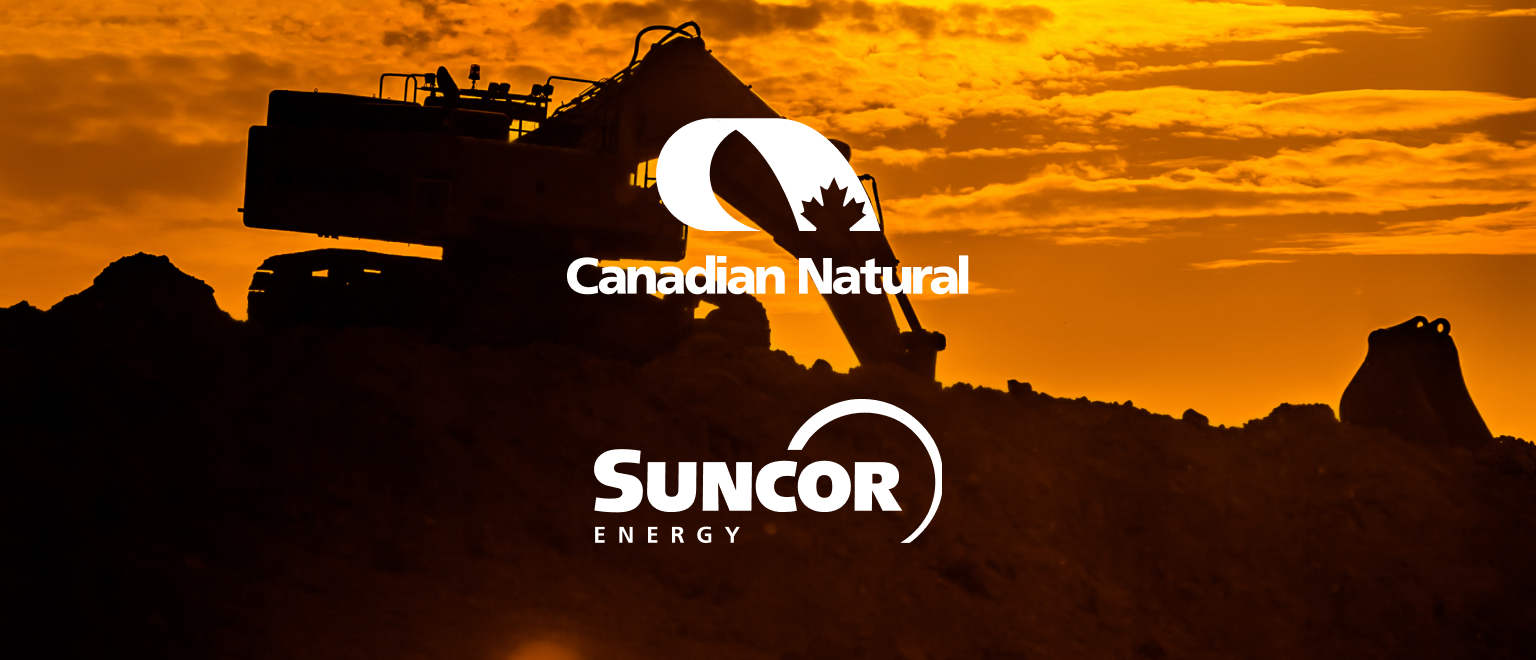Your crew just finished a flawless week on site. Equipment ran perfectly. Safety targets met. The client seemed happy. Then your ticket comes back rejected: “Wrong AFE”
Sound familiar?
If you’re working with Canada’s oil and gas giants, you already know: field excellence isn’t enough. Canadian Natural Resources Limited and Suncor Energy operate at a scale that demands precision in every detail—including how you document and submit your work.
This guide breaks down the most common rejection reasons for each producer—and the exact fixes that prevent them.
The Numbers Behind Canada’s Approval Leaders
In 2024, contractors working with these two producers processed 21,000+ approval requests through Aimsio’s Client Portal.

When you’re one contractor among dozens submitting tickets to 355 different approvers at CNRL, your paperwork needs to be flawless.
Why Are CNRL and Suncor Approval Requirements Different?
CNRL operates with complex cost allocation: intricate AFE/MOC combinations and strict itemization rules. They need to know exactly where every dollar goes, down to the specific pad and discipline.
Suncor runs tight operational controls: shift caps, overtime approvals, and equipment usage audits. They want proof that every hour billed was actually worked and every piece of equipment charged was actually used.
The companies that get paid on time don’t just do good work—they master the documentation requirements that come with it.
The Cost of Field Ticket Rejections
While 91% of tickets get approved on first submission across all clients, the remaining 9% of field ticket rejections creates serious operational drag.
For high-volume contractors, that 9% can represent:
- $90,000 to $900,000+ in delayed monthly revenue
- Multiple resubmission cycles eating up admin time
- Strained relationships with approvers who see the same errors repeatedly
- WIP balances that destroy your cash flow metrics
For a contractor processing $3 million monthly, a 16% rejection rate could mean $480,000 sitting in approval limbo at any given time. Reducing rejections to under 5% could put an extra $330,000 back into active cash flow.
CNRL’s Ticket Rejection Reasons: 6 Common Errors and Fixes
1. Missing or Incorrect AFE/MOC Combinations
The rejection: “Wrong AFE and MOC number.”
CNRL operates on a strict AFE (Authorization for Expenditure) and MOC (Management of Change) system for facility work. AFE approval and MOC approval errors are among the most common field service billing errors. Get either one wrong—or worse, use an invalid combination—and your ticket is dead on arrival.
The fix: Maintain a master list of valid AFE/MOC combinations. Build validation into your ticket creation process that prevents submission if the combination doesn’t match. Update this list regularly as new projects start and old ones close to avoid AFE approval delays.
2. Missing Location Data
The rejection: “No locations provided—cannot allocate costs.”
CNRL needs explicit location data for every charge. No pad, no site, no area? No approval.
The fix: Make location a required field for every line item. Train field teams to collect this information as part of standard work documentation.
3. Improper Itemization
The rejection: “Labor and materials must be split. E&I and Mechanical must be separate lines.”
CNRL has strict itemization rules:
- Labor separated from equipment and materials
- E&I split from Mechanical
- Indirect costs on separate lines
- Third-party rentals itemized
Submit a ticket that lumps these together, and it’s coming back.
The fix: Build itemization rules into your invoicing system. Use drop-down selections that force proper categorization to prevent field service billing errors.
4. Billing Unauthorized Trades
The rejection: “CNRL does not have a QC Assistant rate. Please remove or reclassify.”
CNRL maintains a rate table. Bill for a trade that’s not on it, and you won’t get paid—even if that person was on site doing valuable work.
The fix: Lock your role selection to only those approved in your CNRL contract.
5. Markup Violations
The rejection: “CNRL only pays 10% markup on materials.”
CNRL’s contracts specify exact markup percentages. Exceed them, and you’ll face rejection—and potentially a contract compliance review.
The fix: Program markup caps into your billing system.
QUICK WIN: The 3-Minute CNRL Pre-Check
Before submitting any ticket to CNRL, spend 3 minutes on these checks to prevent rejections:
- Verify AFE/MOC combination against master list
- Confirm location data is complete (pad/site/area)
- Check itemization follows splitting rules
- Verify markup on third-party charges is according to the contract-specified rate
Tired of CNRL rejection loops? See how Aimsio’s built-in validation checks and automated workflows catch errors before submission.
Suncor’s Top Rejection Reasons (And How to Prevent Them)
1. Unapproved Weekend Overtime
The rejection: “No OT Sunday.”
Suncor has strict rules about when overtime can be worked, especially on weekends and holidays. Submit a ticket with Sunday OT that wasn’t pre-approved, and it’s coming back—guaranteed.
The fix: Make sure you can charge OT if your crew works a weekend or holiday.
2. Shift Hour Violations
The rejection: “Shift hours exceed project maximum—cap is 10 hours.”
Most Suncor projects have a maximum shift length, typically 10 or 12 hours. Submit a ticket showing 13-hour days without explanation, and you’ll trigger a rejection.
The fix: Build project-specific shift caps into your timekeeping system.
3. Lunch Billing
The reality: Suncor doesn’t pay for lunch breaks, unless it is clearly stated in the contract.
The fix: Configure your system to automatically exclude lunch from billable hours.
4. Equipment Charges for Unused Assets
The rejection: “Water truck was released Friday morning but billed for full day.”
Suncor audits equipment usage carefully. If your equipment was released, broken down, or sitting idle, they expect charges to reflect actual usage—not wishful thinking.
The fix: Require usage notes for every piece of equipment. Train your field teams to report equipment status daily. If a piece of equipment goes down or gets released early, adjust the charges immediately.
5. Wrong Approver
The problem: With hundreds of approvers, sending your work to the wrong group is easy—and costly.
The fix: Create an approver routing map. Match work types to the correct SOW owners. Verify before every submission.
Building a Rejection-Proof Process
The contractors with the lowest rejection rates don’t just use checklists—they build prevention into their systems. Here’s how:
- Make critical fields mandatory – Configure your system so tickets can’t be submitted without correct codes, locations, and descriptions.
- Automate client-specific rules – Program Suncor’s shift caps and CNRL’s markup limits directly into your billing system.
- Use smart templates – Create work description templates that prompt for required information.
- Validate early and often – Check for errors at every stage, not just before submission.
When compliance becomes automatic, rejections become rare.
The Bottom Line: Suncor and CNRL Demand Excellence
Working with Canada’s largest producers isn’t for everyone. The documentation standards are high. The approval processes are complex. The tolerance for error is low.
But for contractors who get it right, the rewards are substantial. Suncor and CNRL offer volume, consistency, and reliable payment—if you can navigate their requirements.
Most rejections aren’t about field performance. They’re about documentation clarity and process adherence. Understanding common field service billing errors and field ticket rejections is the first step. Master those, and you’ll join the contractors who maintain approval rates above 95% with these demanding clients.
Your next steps:
- Audit your last 20 tickets to each producer. What patterns do you see in rejections?
- Implement the pre-submission checklist for your team.
- Identify your three most common rejection reasons and build prevention into your process.
- Track your rejection rate monthly and celebrate improvements.
The contractors winning with Suncor and CNRL didn’t get lucky. They systematized excellence in ways their competition hasn’t. Now it’s your turn.
Stop Leaving Money in Approval Limbo
Aimsio’s platform includes built-in validation rules, client-specific checklists, and automated workflows designed specifically for contractors working with major producers.
See how we helped contractors process 21,000+ approvals with Suncor and CNRL.
![]()
Aimsio is the all-in-one field-first, back-office-ready platform that helps commercial and industrial companies digitize their operations, eliminate paperwork, assign crews, track progress, and invoice with precision. From the oilfields to the interstate, we help field teams and finance teams perform with clarity, visibility, and confidence.
Field-First. Back Office-Ready. Transforming the Field.




